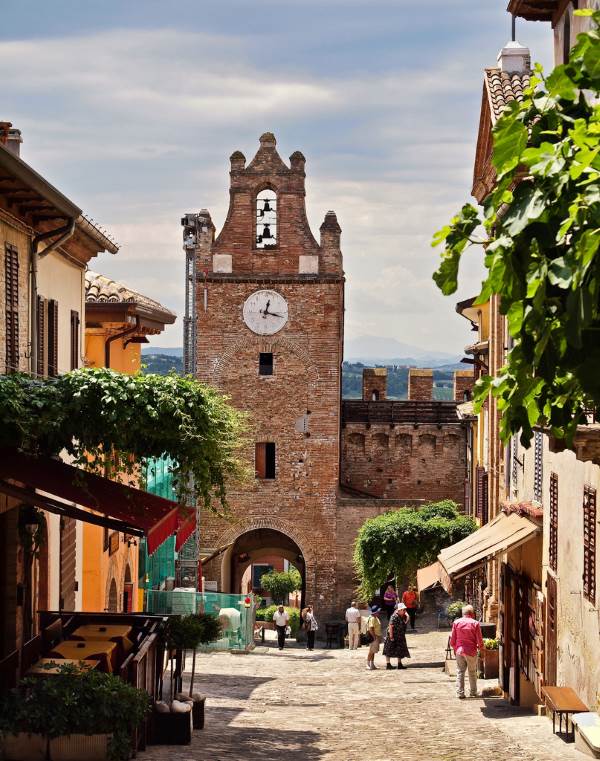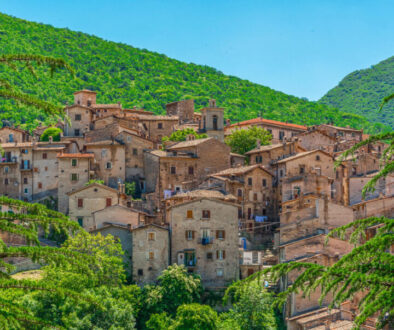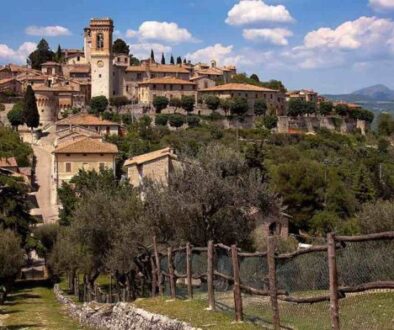The fortress of Paolo and Francesca
Six kilometers from Gabicce Mare and Cattolica, 18 from Pesaro, 20 from Rimini and 35 from Urbino: close distances to reach the village of magic and love called Gradara, in the province of Pesaro-Urbino (Italy). Love, above all, because this is the scenario of the historical myth of Dante’s memory between Paolo and Francesca.
Between sea and hills, the town is one of the main tourist destinations of Italy, in the Riviera Marche-Romagna. The fortified village of Gradara, with its castle and its two walls that protect the whole fortress, represents a medieval complex among the best preserved throughout the Belpaese: it rises on the entire valley in a hill of 142 meters above sea level, a strategic and dominant position over the surrounding territory, kissed by a mild climate, generous with sweetness in every season of the year, mitigated by the inland hills and by the humidity of the sea in front of it.
So, a privileged place, to build a fortress and have control of men and businesses, between ‘fights’ of various kinds between the houses of the Marches and Romagna and the Papal States. It all began in 1150: it is when the noble and powerful De Griffo family builds the keep that is fortified with a couple of mighty walls between 1200 and 1300, by the Malatesta family who, in spite of the fact that the town then moves from hand to hand, they left their massive footprint, so much so that Gradara is often referred to as Rocca Malatestiana. The domain of this family lasted until the middle of 1400, exactly in 1463, when the Pope’s soldiers, led by Federico da Montefeltro, took possession of it. It is the historical moment of the Sforza of Pesaro, faithful to the papacy: in particular we remember Giovanni, the (almost) anonymous husband of the decidedly more famous Lucrezia. Among the families that later take care of the Fortress are also included Della Rovere and the Medici, in a real swirl of infighting and not that for many centuries has characterized these territories between Marche and Emilia Romagna. This did not do much good for the whole so much so that at the beginning of the twentieth century its state of conservation was not the best: luckily the last owner of this enchanted place intervenes, the engineer Umberto Zanvettori who, around the twenties, brings it back to its ancient beauty for our ecstatic eyes. The area is famous for certain craftsmanship, such as ceramics and majolica, important both in the building sector and in the craft sector, as well as for the presence of vineyards and olive groves. But the Gradara site literally calamita for its medieval atmosphere, ‘bristling with stories, weapons and passions… And there is to be considered a certain congressional tourism, through the company Gradara Innova which has several facilities in the historic center , a few steps from the famous Rocca, ideal for meetings, events, conventions, conferences, presentations, seminars.
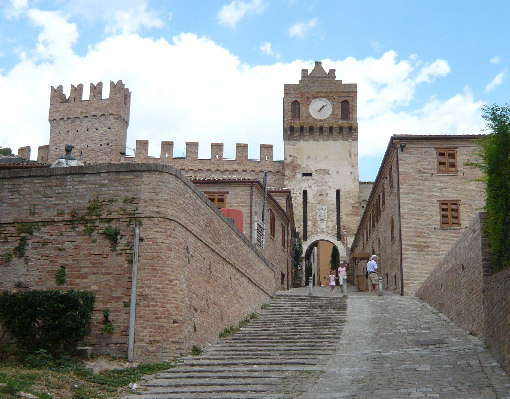
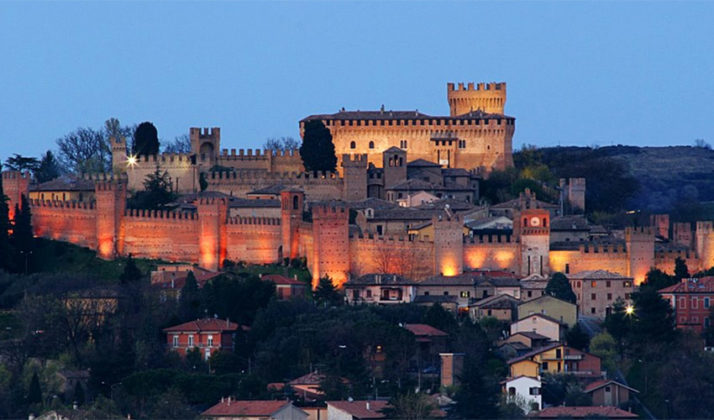
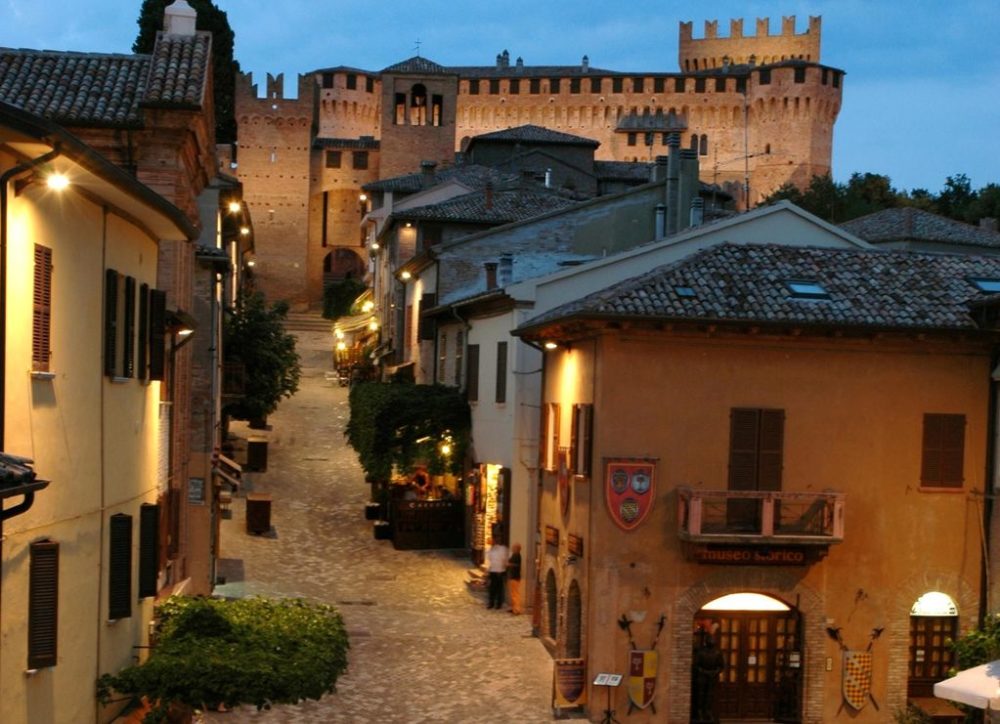
Among the unmissable events of Gradara, there are initiatives related to its past, in which the Middle Ages are protagonists, including legends, mysteries and… gluttony (pure!). In fact, they are called precisely the Tuesdays of Gradara, between mystery and legend when, at nightfall, the ancient castle comes alive with theatrical and itinerant paths, to the discovery of its most obscure and suggestive corners. Tuesdays are usually the odd ones, between July and August. Do not miss another day of the week, Thursday at the Castle: throughout the summer, between June and September, you enter literally and practically back in time, in full medieval atmosphere or, more, Malatesta, reliving ancient splendor and customs commoners. Music, dances, parades of ladies and knights in their elegant clothes, evolutions ‘fiery’ (it is appropriate to say!) Of courageous fire eaters, duels and historical reconstructions of the Guardia di Gradara. And in July, how can we not participate in the Castle Siege? A historical re-enactment of the doc that brings to memory and to the eyes of lucky visitors the 40 days of siege that Gradara and the Malatesta family suffered in 1446 by the Sforza and Montefeltro families (and who won!).
And what is The Magic Castle Gradara?
A whirlwind of magical effects to make your head spin, around the village. And it is the 1450 dinner plate pardon, the banquet that takes place during the Middle Ages at the table, between June, July, August, hunting for the flavors and aromas of that time. Per la gorge is also the Enogastro-nomadic Tour in Rosa, 4 courses, from appetizers to desserts in many different restaurants ending with the Notte Rosé on the Walkways of Ronda with a glass of rosé sipped in the most romantic place of the ancient village, a path suspended between sea and stars, always between July and August. And between November and January, here is the ‘Christmas castle’, with fun itineraries, like the one with the jester for the delight of those present, big and small, with games, sweets, gifts, markets. Gradara, as a land of ‘frontier’ between Marche and Emilia, offers typicality of both regions, between meat and fish on both sides. Among the first, there are the ‘bigol’, big handmade spaghetti and seasoned with meat sauce or porcini mushrooms. However, the special dish of this is made up of so-called ‘tagliolini con la bomba‘, a recipe of rural tradition, in which pasta, originally only flour and water (today the egg is used in the dough), is seasoned with a sauce made of onion and lard, or pancetta (depends), sautéed in a little oil. The bomb effect comes from the fact that the noodles are not drained completely, so the hot oil poured over the residual water, creates a lot ‘of steam, a bomb, in fact. Gradara is the Orange Flag of the Italian Touring Club, a title given to those places where life is still harmonious, dropping visitors into a medieval world full of passions. A medieval center a few steps from the sea, where you can browse through the Castle, Rocca, city walls, in search of the points that saw the legendary love of Paolo and Francesca unleashed but also the bloody power struggles between lords and lords of distant times.
